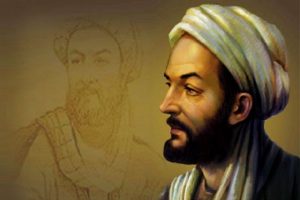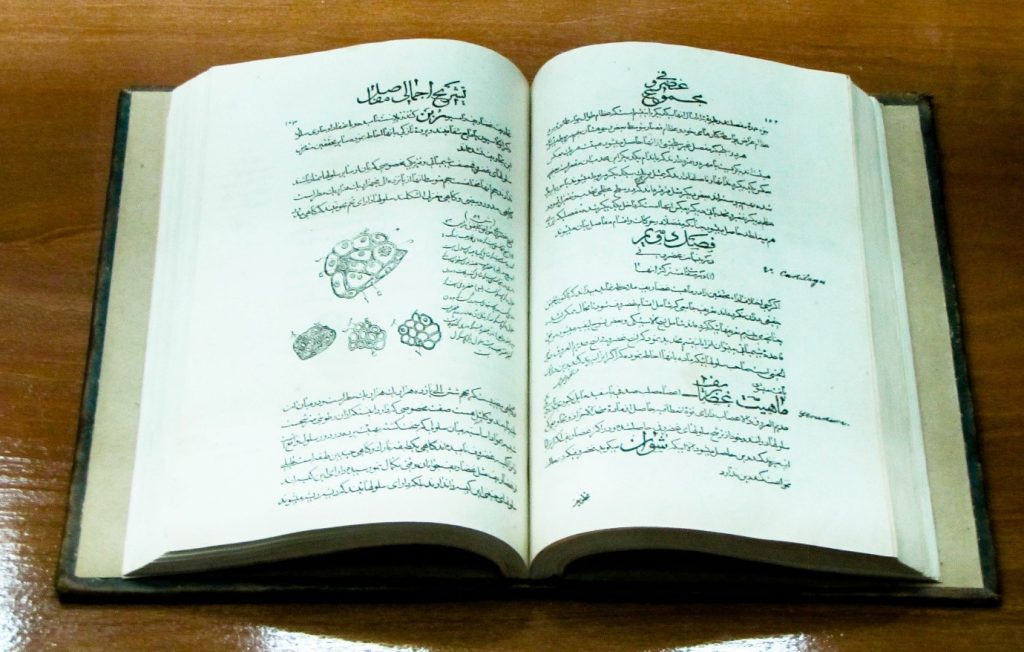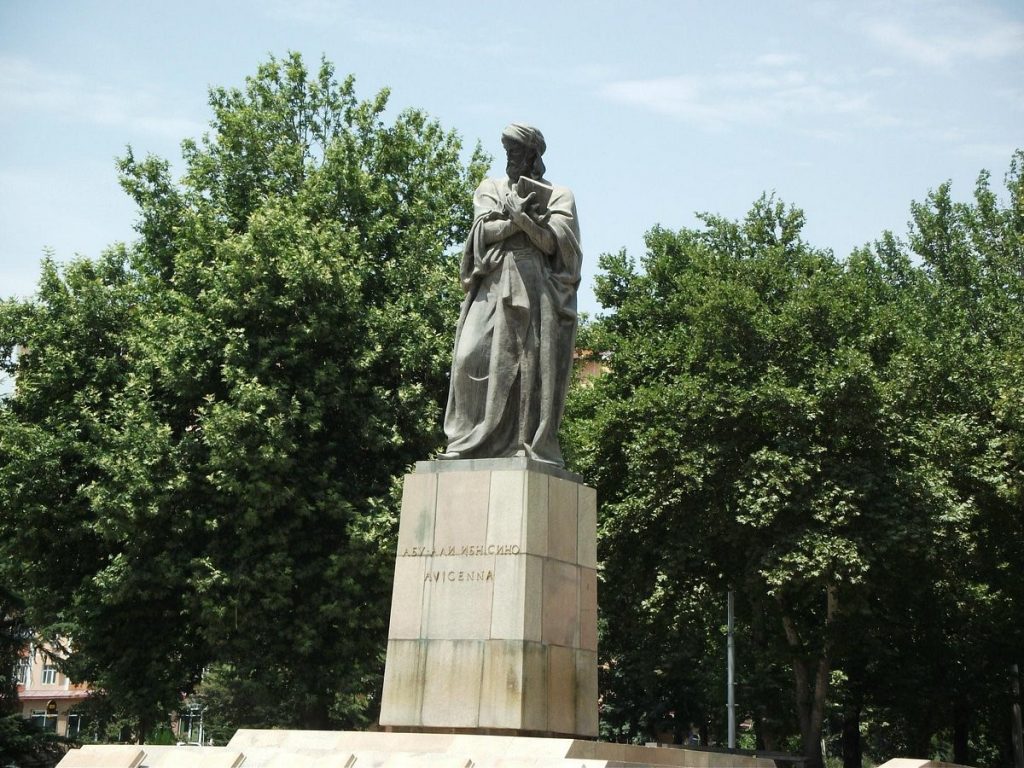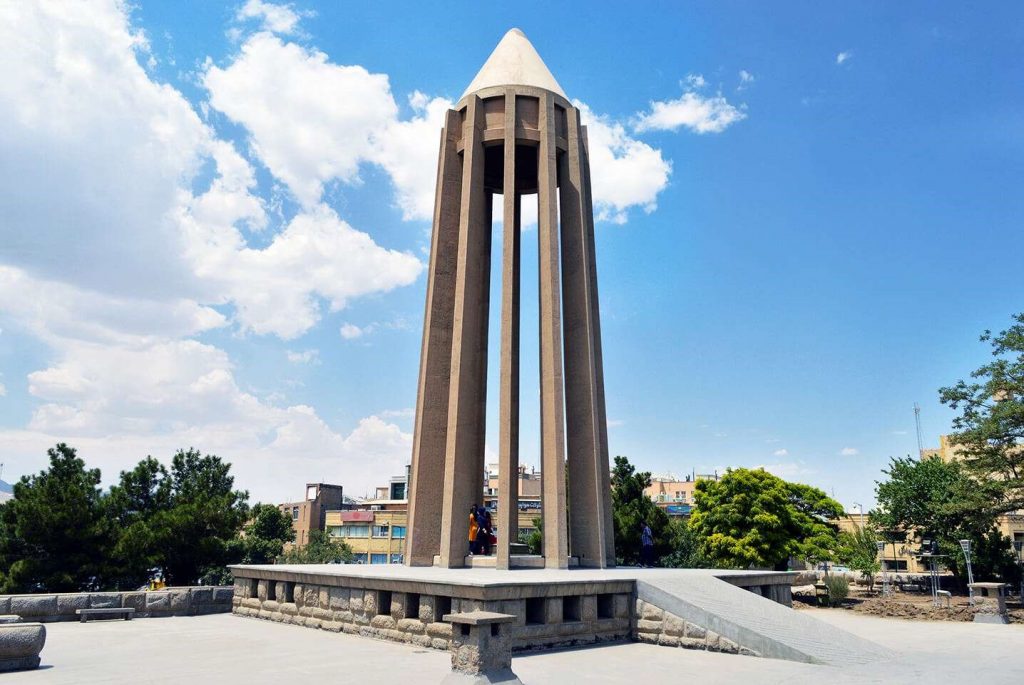Iran homes a significant number of philosophers, physicians, and eminent scientists, including Avicenna, Zakaria Razi, Borzoyeh, and Alavi Shirazi. Avicenna is highly notable among other Iranian characteristics, so he is called modern medicine’s father; because he attempted to diagnose and treat different diseases. Nowadays, his mausoleum in Hamedan province has become a most visited place that attracts various local and foreign tourists; hence the visitors find themselves in this historic monument effortlessly as that is highly accessible. Keep Reading and stay with Iran Tourism to discover The Tomb of Avicenna in the west of Iran.

Ibn Sina or Avicenna, Persian polymath
Who was Avicenna?
Avicenna, or Ibn-e Sina, who lived during the Islamic Golden Age, was born in Afshana village in Bukhara, Uzbekistan, in 980 and died in 1037 at the age of 56 in Hamedan. He is nicknamed Sharaf al-Mulk, Hujjat al-Haq, Bu Ali Sina, and Sheikh al-Rais. He is among the influential figures in philosophy, mathematics, medicine, astronomy, logic, music, chemistry, physics, etc. He owes his global fame to his valuable books concerning medicine and philosophy so that his book The Canon of Medicine is taught in various universal universities.
Abu Ali Sina succeeded in memorizing the holy Quran, was skilled in literature, and was a step-by-step professional in various fields, including Greek sciences; therefore, he became a court physician in Bukhara when he was 17. Then he moved to Gurgan, Ray, Hamedan, Isfahan, and Khuzestan; however, he returned to Hamedan, passed away after a short time, and was buried many miles away from his birthplace. His birth date is celebrated as the physician’s day in Iran, and The Dark Side of the Moon is called Avicenna Crater in his honour. Various hospitals and colleges in Tehran, Isfahan, Shiraz, Istanbul, France, Pakistan, etc., selected Avicenna’s name to commemorate this prominent Iranian figure. Iran Travel Guide Center helps you visit this glorious attraction in Hamedan.
What Is the Legacy of Avicenna?

The Canon of medicine written by Avicenna
The critical role of Avicenna in logic, philosophy, and medicine is undeniable, and his books are translated and paraphrased in different languages so that experts can benefit from his specialized viewpoints. An interesting point concerning this notable Iranian physician is depicting his figure by Dante in Divine Comedy debating with well-known thinkers such as Socrates, Virgil, Plato, and Lucan. Indeed, he has changed the destiny of intellectual history in the West and East. Famous authors like George Sarton considered him the legendary Islamic scientist who was a unique and matchless person. He is a national figure in Iran and nearby countries.
Where Is the Tomb of Avicenna?
The Tomb of Avicenna is situated in the beating heart of Hamedan, Iran, and this monument was constructed to memorize the Iranian polymath who is eminent in the world.
What Are the Characteristics of The Tomb of Avicenna?
The Tomb of Avicenna covers an area of about 3050 square meters; this place is well-known due to its glorious architecture. In this monumental complex, you can access The Tomb of Avicenna, the fusiform pointed tower, the library, and the museum. The designer of Ibn-e Sina Tomb was Hooshang Seyhoun, and he was impressed by the Kavus Tower, located in Gonbad-e Qabus. The mausoleum was constructed in 1952, and the height of its tower reached 28 meters. This monumental structure enjoys specific architectural styles, including ancient Iran and post-Islamic architecture; in other words, it displays the traditional elements of ancient Iran’s architecture.
The designer of this tourist attraction in Hamedan was inspired by the fountains of ancient buildings, the design of Persian gardens, and the external decoration of traditional palaces of Iran. Hooshang Seyhoun employed the extracted Stones of the Alvand Mountain to decorate the outer parts of the Ibn-e Sina Tomb. Seyhoun, in his book entitled Seyhoun’s Half a Century Architectural and Painting Works, claims that the tenth portals of the monument signify ten centuries after Avicenna’s death because the memorial was constructed to commemorate his thousandth birthday. The tower possesses columns that refer to Avicenna’s expertise in 12 fields of science during his life. The southern chamber of the mausoleum devotes to the discovered coins, bronze items, and potteries dating back to 1000 BC and the Islamic era. The northern section includes:
- Over 8000 valuable national and international manuscripts.
- The works of Avicenna.
- The works of poets and authors of Hamedan.

The Statue of Ibn-e Sina
There is a beautiful park next to this magnificent structure resembling a semi-circle shape, and tourists can rest under the shadow of its elevated trees. The statue of Avicenna holding a book on the east side of Avicenna Square welcomes visitors.
What Are the Specific Parts of The Tomb of Avicenna?
The tomb, the statute of Avicenna, the library, the museum, and the surrounding area reveal Persian architecture’s art. Ibn-e Sina Tomb consists of sections referring to a particular period in Iran’s history. The Tomb of Avicenna is on the right side of the monument, and his friend’s tomb, Abu Saeid Dakhdouk, is on the left. The monument’s east side overlooking Avicenna Avenue belongs to the grave of Abolqassem Aref Qazvini, a famous Persian musician and poet. The statue of Avicenna, made of white marble, sits upon a rectangular-shaped column on the east side of Avicenna Square and weighs 4.5 tons, and its height reaches over 3 meters. The library displays a collection of books in different languages, including Persian, English, French, and Arabic, in specific fields such as literature, science, history, etc. In the Avicenna Museum, you can observe an image of Avicenna’s skull photographed during the restoration of his tomb.
What Are the Close Attractions to the Tomb of Avicenna?
Hamedan Province on the west side of Iran consists of different attractions worth your time and energy; hence many travellers join this historical city of Iran to experience its most visited places, including The Tomb of Avicenna. The closest attractions to The Tomb of Avicenna are Alavian Dome which is about 3 km away from the tomb, Qorban Historic Tower which is 950 meters away from the monument, The Mausoleum of Baba Taher, which is 3.1 km away from Ibn-e Sina Tomb, Ganjnameh Cable Car which is 8.7 km away from The Tomb of Avicenna, and Ganjnameh Waterfall which is 8.8 km away from the tomb.

Mausoleum of Ibn-e Sina
Frequently Asked Questions
What Are the Best Restaurants Near the Tomb of Avicenna?
The best restaurants near The Tomb of Avicenna are Cactus Restaurant, Payam Restaurant, Bambo Fast Food, and Haida Sandwich.
What Are the Best Hotels Near the Tomb of Avicenna?
The best hotels near The Tomb of Avicenna are Marmar Hotel (one-star), Yas Hotel (two-star), Vandik Hotel (three-star), Parsian BuAli Hotel (four-star), and Iran Hotel (five-star).
When Is the Best Time to Visit Ibn-e Sina Tomb?
The best time to visit this historical attraction is spring when the weather is pleasantly cool; however, you may come to see the monument during other seasons from 9 a.m. to 8 p.m. Keep in mind that the memorial doors are closed on public holidays.




No comment